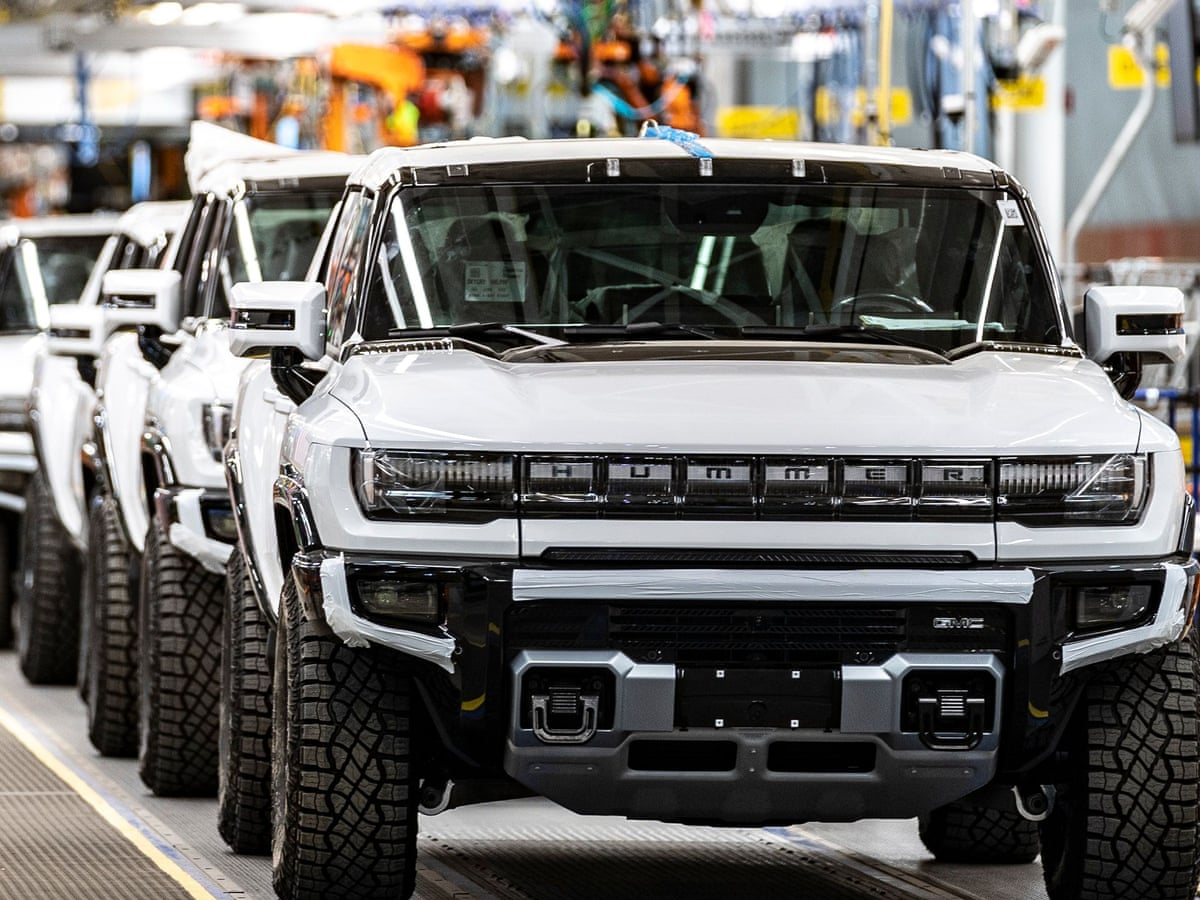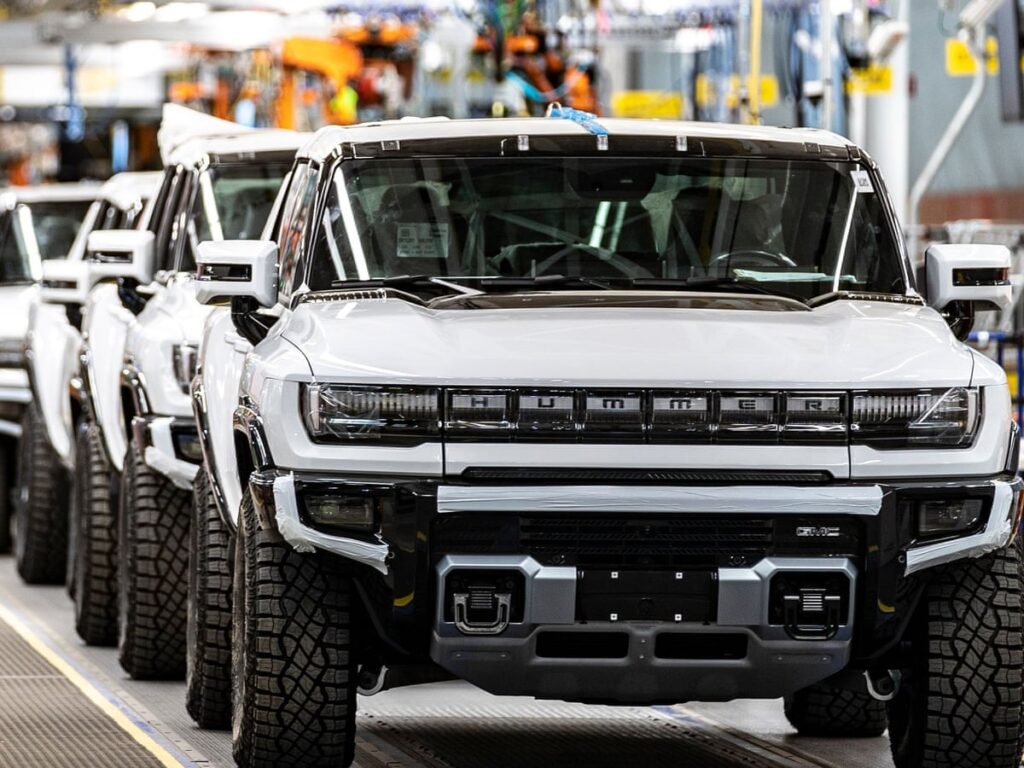With their imposing size and luxurious interiors, Hummer limos have long been a symbol of extravagance and status. However, beneath their glamorous facade lies a harsh reality – Hummer limos are highly detrimental to the environment. These gas-guzzling giants emit copious amounts of carbon dioxide (CO2) into the atmosphere, contributing to climate change and air pollution. Just one hour of idling can release approximately 20 pounds of CO2, highlighting the significant impact these vehicles have on our planet.
The environmental implications of Hummer limos cannot be taken lightly. Introduced as civilian versions of military vehicles, Hummer limos gained popularity during the 1990s and early 2000s. Their massive engines, which were once revered for their power and performance, have now become synonymous with excessive fuel consumption. On average, a Hummer limo consumes around 10 to 15 miles per gallon of fuel. To put this into perspective, a standard sedan can achieve more than double that mileage. This staggering difference highlights the urgent need for more sustainable transportation options, such as electric or hybrid limousines, to mitigate the environmental damage caused by Hummer limos.

Are Hummer Limos Bad for the Environment?
Hummer limousines are known for their luxurious and extravagant appeal. These oversized vehicles are often associated with wealth and prestige. However, there has been a growing concern about their impact on the environment. This article aims to delve into the environmental implications of Hummer limos, exploring their fuel consumption, emissions, and overall sustainability. By examining the facts, we can better understand whether Hummer limos are truly detrimental to the environment or if there are alternative perspectives to consider.
The Fuel Consumption of Hummer Limos
One of the primary environmental concerns surrounding Hummer limos is their fuel consumption. These vehicles are notorious for their poor fuel efficiency, often guzzling gas at an alarming rate. With their large engines and heavy bodies, Hummer limos can consume a significant amount of fuel, leading to increased carbon emissions.
Due to their size and weight, Hummer limos typically have low gas mileage, often ranging between 5-10 miles per gallon. This means that for every gallon of gas used, Hummer limos can only travel a relatively short distance compared to smaller, more fuel-efficient vehicles. The excessive fuel consumption of Hummer limos contributes to the depletion of fossil fuels and increased carbon dioxide emissions, thereby exacerbating the issue of climate change.
Additionally, the high fuel consumption of Hummer limos results in higher operating costs for their owners. With gas prices continually fluctuating, the expenses associated with filling up a Hummer limo’s tank can be exorbitant. Consequently, the economic impact of these vehicles is not limited to their initial purchase price but extends to the ongoing costs of fueling them.
The Emissions from Hummer Limos
In addition to their high fuel consumption, Hummer limos also emit substantial amounts of greenhouse gases. The combustion of fossil fuels in the engine produces carbon dioxide (CO2), one of the primary contributors to global warming. As Hummer limos consume a significant quantity of fuel, their emissions of CO2 and other greenhouse gases are accordingly elevated.
Moreover, Hummer limos often utilize diesel engines, which emit higher levels of particulate matter and nitrogen oxide compared to gasoline engines. Particulate matter consists of tiny particles suspended in the air, which can have adverse health effects when inhaled. Nitrogen oxide contributes to air pollution and smog formation, further compromising air quality.
While advances in engine technology and emission control systems have made modern vehicles more environmentally friendly, Hummer limos have struggled to keep up with these developments. The combination of their heavy weight, inefficient engines, and outdated emissions control systems contributes to their significant environmental impact.
The Sustainability of Hummer Limos
When considering the overall sustainability of Hummer limos, it is essential to weigh both the negative and positive aspects. While their fuel consumption and emissions present significant environmental concerns, there are several factors to consider that may provide a more balanced perspective.
Firstly, Hummer limos are often used for special occasions and events, where their usage is limited to a few hours. In these cases, the overall carbon footprint of a Hummer limo is reduced compared to a daily commuter vehicle that covers long distances regularly. Additionally, some limo service providers have taken steps to offset their carbon emissions by investing in carbon offset programs or adopting cleaner fuel alternatives.
Furthermore, the popularity of Hummer limos has waned over the years, partly due to the environmental criticism they have faced. As a result, efforts have been made to introduce more environmentally friendly options in the luxury transportation industry. Electric and hybrid limousines are now emerging as alternatives, providing a more sustainable choice for those who still want to enjoy a luxurious and extravagant experience without compromising their environmental values.
Exploring Alternative Luxury Transportation Options
As consumer awareness and concern for the environment continue to grow, it is crucial to explore alternative luxury transportation options that minimize the negative impact on the environment. These alternatives include electric and hybrid limousines, which offer reduced emissions and improved fuel efficiency.
Electric limousines have zero tailpipe emissions, as they are powered solely by electricity. By harnessing clean energy sources, such as renewable electricity, these vehicles can significantly reduce their carbon footprint and contribute to a cleaner and more sustainable future.
Hybrid limousines, on the other hand, combine an internal combustion engine with an electric motor, providing a more fuel-efficient and environmentally friendly option. These vehicles can switch between using gasoline and electric power, optimizing energy usage and reducing emissions.
As the demand for environmentally friendly transportation options increases, it is likely that the luxury transportation industry will continue to evolve to meet these demands. By embracing alternative solutions and adopting cleaner technologies, the industry can minimize its impact on the environment while still offering the opulence and comfort that customers desire.
Additional Perspectives on the Environmental Impact of Hummer Limos
Aside from the direct impact on fuel consumption and emissions, it is important to consider other perspectives related to the environmental impact of Hummer limos. These perspectives shed light on various aspects that can influence our overall understanding of their environmental implications.
Ecological Damage due to Resource Extraction
While Hummer limos are often criticized for their fuel consumption, it is necessary to acknowledge that the extraction of the raw materials required for their production also has environmental consequences. The manufacturing of Hummer limos involves significant amounts of metals and minerals, which are extracted through mining. Mining operations can result in deforestation, habitat destruction, and soil erosion, thereby causing ecological damage.
Additionally, the production of metals, such as aluminum and steel, requires substantial energy input. This energy is often produced using non-renewable sources, further exacerbating the environmental impact. By considering the entire lifecycle of Hummer limos, from resource extraction to manufacturing, we gain a more comprehensive understanding of their environmental implications.
Key Takeaways on “Are Hummer Limos Bad for the Environment?”
- Hummer limos contribute to air pollution due to their large size and fuel consumption.
- The production of Hummer limos consumes a significant amount of resources and energy.
- Hummer limos have a higher carbon footprint compared to smaller, more fuel-efficient vehicles.
- Choosing eco-friendly transportation options, such as electric or hybrid limos, can help reduce the environmental impact.
- Regulations and policies that promote the use of greener vehicle choices are important for mitigating the environmental effects of Hummer limos.
Frequently Asked Questions
Welcome to our Frequently Asked Questions section where we dive into the topic of the environmental impact of Hummer limos. Learn more about the effects of these vehicles on our planet and find out what steps can be taken to minimize their negative footprint.
1. How do Hummer limos affect the environment?
Hummer limos have a negative impact on the environment due to their large size and high fuel consumption. These vehicles typically run on gasoline and have low fuel efficiency, resulting in increased greenhouse gas emissions. The emissions from Hummer limos contribute to air pollution and climate change, exacerbating the global environmental crisis we face today.
Moreover, the production of Hummer limos involves the extraction of raw materials, such as steel, rubber, and plastic, which requires significant energy and contributes to pollution. Additionally, the disposal of these vehicles at the end of their life cycle can further harm the environment if not done properly, as they contain various materials that can be hazardous if not handled correctly.
2. Are there any alternatives to Hummer limos that are more eco-friendly?
Yes, there are alternatives to Hummer limos that are more eco-friendly. One option is to choose a limousine that runs on alternative fuels, such as biodiesel or electricity. Electric limousines produce zero tailpipe emissions, reducing air pollution and minimizing their impact on climate change. Biodiesel-powered limousines use a renewable energy source and produce lower greenhouse gas emissions compared to traditional gasoline-powered vehicles.
Additionally, opting for smaller and more fuel-efficient limousines can also help reduce the environmental impact. These vehicles consume less fuel and produce fewer emissions compared to larger models. It’s important to consider the size and fuel efficiency of the limousine when making a choice, taking into account the number of passengers and the purpose of the transportation.
3. Can anything be done to make Hummer limos more environmentally friendly?
There are steps that can be taken to make Hummer limos more environmentally friendly. One approach is to retrofit these vehicles with technologies that improve fuel efficiency, such as hybrid systems or engine modifications. By reducing fuel consumption, the environmental impact of Hummer limos can be mitigated to some extent.
Furthermore, regular maintenance and tuning of the engines can also optimize their performance and increase fuel efficiency. This includes keeping tires properly inflated, using high-quality lubricants, and ensuring that all engine components are in good working condition. These practices can help minimize fuel consumption and reduce emissions.
4. Is renting a Hummer limo for a special occasion detrimental to the environment?
Renting a Hummer limo for a special occasion does contribute to the environmental impact of these vehicles. While the impact may be limited to a short period, it still adds to the overall carbon footprint. However, the specific impact will depend on various factors, including the distance traveled, the number of people sharing the ride, and the fuel efficiency of the vehicle.
If you are concerned about the environmental impact, you may consider offsetting your carbon emissions by supporting projects that reduce or capture greenhouse gas emissions. Many organizations offer carbon offset programs that invest in projects such as renewable energy or reforestation, which can help counterbalance the emissions produced during your limo ride.
5. What can individuals and the limo industry do to reduce the environmental impact of Hummer limos?
Both individuals and the limo industry can take steps to reduce the environmental impact of Hummer limos. On an individual level, choosing alternative modes of transportation, such as public transit or carpooling, whenever possible can help minimize the reliance on large and fuel-inefficient vehicles. Planning routes effectively and avoiding unnecessary trips can also contribute to reducing the overall carbon footprint.
Within the limo industry, investing in more eco-friendly vehicles, such as electric or biodiesel-powered limousines, can significantly reduce the environmental impact. Additionally, implementing stringent maintenance practices, regular engine tuning, and promoting fuel-efficiency training for drivers can help maximize the efficiency of the fleet. Adopting sustainable practices throughout the entire lifecycle of the vehicles, from production to disposal, is crucial in minimizing the environmental impact of Hummer limos.
Hummer limos have become popular for their luxurious and extravagant appeal, but their impact on the environment raises concerns. These vehicles consume large amounts of fuel due to their heavy weight and inefficient engines, resulting in high greenhouse gas emissions. This contributes to air pollution and climate change, posing a threat to our planet’s health.
Additionally, the manufacturing process of Hummer limos involves the extraction and processing of raw materials, leading to further environmental degradation. This includes the mining of precious metals and the production of plastics and other materials used in the construction of these vehicles. Furthermore, once these vehicles are no longer in use, their disposal can also have negative consequences for the environment.
Overall, Hummer limos are indeed bad for the environment. They contribute to pollution, climate change, and resource depletion. It is important to consider these factors when making decisions about transportation and prioritize more sustainable options that have less impact on our planet.






